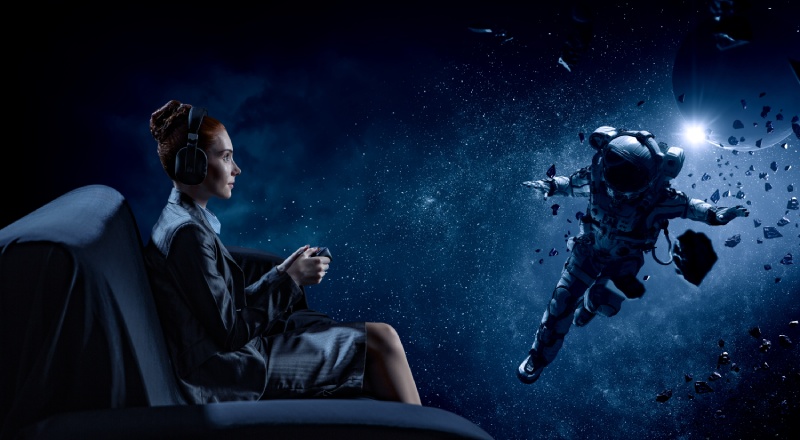Table of Contents
In the world of filmmaking, Visual Effects (VFX) have revolutionized the way stories are brought to life on the big screen. VFX artists play a pivotal role in creating mesmerizing visual experiences that transport audiences for captivating and otherworldly realms. From fantastical creatures to awe-inspiring explosions, their artistic prowess enhances the storytelling process. In this blog, we’ll explore the diverse types of VFX artists in films and delve into their unique roles and responsibilities that make cinematic magic possible.
The rapid advancements in technology have catapulted the art of VFX to new heights, opening up infinite creative possibilities for filmmakers. Today, the boundaries of what can be achieved through VFX seem boundless, and it is the sheer talent and dedication of VFX artists that continue to push these boundaries further. The scope of VFX for films has been making headlines these days too.
In this blog, we’ll explore the diverse types of VFX artists in films and delve into their unique roles and responsibilities that make cinematic magic possible. These unsung heroes of filmmaking deserve recognition for their invaluable contributions to the art of storytelling. Let’s embark on a journey to uncover the secrets of their craft and gain a deeper appreciation for the art of VFX in the world of cinema.
Concept Artist
The journey of VFX in films often begins with the concept artist. Their role is to visualize the director’s ideas and create stunning visual representations through sketches, storyboards, and digital art. These visual blueprints provide a foundation for the entire VFX team to work upon. Concept artists are instrumental in establishing the film’s visual identity and setting the creative tone for the project.
3D Modeler
3D modelers bring digital sculptures to life. They meticulously craft detailed 3D models of characters, props, and environments based on the concept art. These models serve as the building blocks for subsequent stages of the VFX pipeline. Modelers need a keen eye for detail and an understanding of anatomy, architecture, and physics to ensure realism in their creations. When you learn VFX, this is one of the first topics introduced to students.
Texture and Shading Artist
The texture and shading artists infuse life into 3D models by adding colors, textures, and materials to them. They create surface properties that make objects appear matte, glossy, rough, or reflective. These artists have a deep understanding of lighting and how it interacts with various surfaces, ensuring that the final output looks visually cohesive and compelling.
Rigging Artist
Rigging is the process of giving movement and flexibility to 3D models. Rigging artists create digital skeletons and control systems that enable characters and creatures to move convincingly. Their work allows animators to breathe life into characters, making them emote, walk, and perform complex actions with fluidity.
Animator
The animator is responsible for breathing life into the characters and objects within the VFX world. They use the rigged models to create realistic movements, expressions, and actions that align with the film’s narrative. Animators often study real-life references to imbue their creations with natural movements and emotions, making them relatable to the audience. Visual effects course in Kolkata do skim over topics of animation since both are interrelated in many domains.
FX (Special Effects) Artist
The FX artist is the wizard behind the dazzling visual spectacles we witness on screen. They create various dynamic elements, such as fire, smoke, explosions, water simulations, and magical effects, using specialized software. Their work adds excitement and spectacle to action sequences, fantasy worlds, and sci-fi adventures.
Compositing Artist
Compositing is the process of blending different VFX elements together to create seamless and cohesive shots. Compositing artists take the outputs from various departments and assemble them to form the final shot. They ensure that the VFX elements integrate seamlessly with live-action footage, creating the illusion that they are all part of the same scene.
Conclusion
VFX artists in films are the unsung heroes who enrich our cinematic experiences with awe-inspiring visuals. Each VFX artist contributes their unique skills to various stages of the VFX pipeline, culminating in a harmonious symphony of imagination and technical prowess. From concept artists who give birth to ideas to compositing artists who weave them into reality, every role is indispensable. Next time you watch your favorite blockbuster, take a moment to appreciate the mastery of these VFX artists who make the impossible possible on the silver screen.
With each passing year, blockbuster movies showcase mind-boggling VFX sequences that leave viewers in awe. From superhero epics to fantasy adventures, from science-fiction sagas to historical dramas, VFX has become an integral part of modern cinema. Whether it’s the breathtaking landscapes of distant planets, larger-than-life creatures, or high-octane action sequences, VFX artists work tirelessly behind the scenes to create the magic that unfolds on the silver screen.

